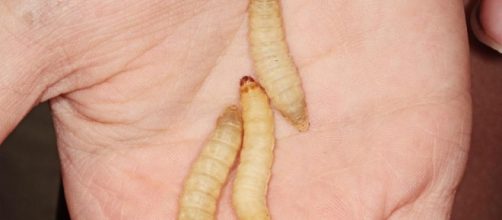Enough Plastic is thrown away each year to circle the earth four times. Only 5% of it is recycled. Plastic accounts for 90% of all trash floating on the ocean's surface.
Basically, plastic Pollution is a big problem. It resists biodegradation, so the 300 million tons of plastic waste the world produces each year contributes majorly to the world's pollution problem. A regular plastic shopping bag can take 100-400 years to decompose.
Wax worms: a solution to the world's plastic problem?
A team of European Scientists have discovered that Wax Worms can eat through plastic.
The team is led by Federica Bertocchini, a developmental biologist at the University of Cantabria in Spain. The discovery could be a step towards finding a solution to the world's plastic pollution problem.
Bertocchini realized the worms' potential when cleaning out beehives in her backyard two years ago. She pulled some wax worms out of a hive and put them in an old plastic bag. An hour later, she noticed the worms had chewed small holes through the bag.
What are wax worms?
Wax worms are the caterpillar larvae of wax moths. They live in beehives and survive by eating wax. They are damaging to the hives and considered pests by beekeepers. They are white caterpillars with black-tipped feet and black or brown heads.
Their immune systems are actually quite similar to mammals', and can be used instead of mammals in some types of scientific experiments that involve animal testing.
Wax worms are often used as food for pet birds, reptiles, amphibians, and small mammals such as hedgehogs, as well as for fishing bait. They can also be eaten by humans, if entomophagy is your thing.
Biodegrading plastic
Beeswax and plastic are probably chemically similar; since the larvae have evolved to chew through beeswax, that probably explains why they can digest plastic as well.
Bertocchini and her team's research found that the worms were pretty slow at chomping through the plastic--it would take 100 worms nearly a month to break down an average plastic bag.
However, their research also found that it wasn't the worms' chewing that was breaking down the plastic. They blended a bunch of worms to create a soupy mix and poured it over plastic--and the worms' remains dissolved it.
The scientists are not sure whether the enzyme that is dissolving the plastic is from the wax worms, or from bacteria in the worms' digestive tracts; figuring that out is the next step in their research. If scientists can figure out the enzyme that is breaking down plastic, they hope to eventually be able to manufacture the enzyme through a biotechnological process instead of using actual worms.

